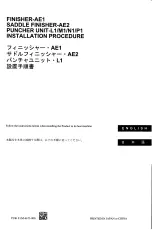
Operation
i
ndu
Q
®
- Series VMM
- 22 -
© SIKA
•
Ba_VMM_us
•
09/2018
Operating modes:
The display electronics of the VMM has two different operating modes:
1. Display.
In display mode, measured values can be displayed in various combinations and the same
applies to the VMM settings. Parameter settings cannot be changed in this mode.
Display mode is the standard (default) operating mode when the device is switched on.
2. Programming.
The parameters of the VMM can be changed in this operating mode. After entering the corre-
sponding password, either only the customer-modifiable functions (customer password) or
all functions (service password) are released for modification.
User interface:
The user interface is hierarchically structured.
At the top level you can find the Functional
classes which are displayed as headings. It
represents a kind of logical groups for values
and parameters.
The second level is the menu level and it in-
cludes either parameters or further submen-
us.
The third and lowest level is the parameter
level, which only includes parameters.
All functional classes are interlinked horizon-
tally, while all sub items of a functional class
are interconnected vertically.
Functional classes, functions and parameters:
Functional classes are strictly written in upper case letters (headings). For the functions and
parameters at the next levels upper und lower case is used.
The various functional classes and functions are described in chapter "Functional classes
(main menu)" (
p. 24).
For the menu level
always the first line of the LCD the corresponding heading for the menu
item and the contents of second line is context-sensitive:
information, YES/NO answers, alternative values, numerical values (with dimensions, if ap-
plicable) or error messages.
If the user attempts to modify values for any of these parameters without entering the re-
quired password, the message “Access denied” will be displayed. See also "Operating
modes" (
p. 22) and "Passwords" (
p. 23).
The various categories for submenu items are described below.















































